- Home
- P. T. Deutermann
The Commodore Page 11
The Commodore Read online
Page 11
“Yes, sir, and they appear to be headed back up the Slot. We’re still developing a track on them.”
“Good,” Sluff said. “Pass it on to Cactus once you compute it. In the meantime we’re gonna keep heading northeast and then swing south. Get the quartermasters to make sure we’re not running into dangerous ground ahead.”
“Combat, aye.”
Sluff went back to his captain’s chair, took off his steel helmet, and crushed the urge to bum a cigarette from someone. He’d quit smoking years ago, but in times like these … “Bosun’s Mate,” he called.
“Bosun’s Mate, aye,” came a voice from behind his chair.
“Make some damn coffee, if you please,” Sluff said.
“Damn coffee, aye.”
TWELVE
Purvis Bay
By midafternoon the three ships of DesDiv 212 were anchored in the anchorage at Purvis Bay, next to the Tulagi base. All three had rearmed and refueled upon return to the Tulagi complex. Carter’s after engine room was a total loss, so it was likely she was bound for Pearl or even all the way back to the States. She had been able to maintain eighteen knots on the trip back to the anchorage, but a single-screw destroyer wasn’t worth much in a fight. They’d buried their dead at sea on the way back, and now they were simply awaiting orders while mourning their shipmates who’d joined the almost three thousand other American seamen already asleep in the deeps of Ironbottom Sound. The single, small hole low on her starboard side belied the devastation in the engine room.
Sluff had sent off an abbreviated operational report of the night’s action to COMSOPAC, but there had been no reaction as yet. He’d issued an order to the division to let their people stand down and get some rest now that all three were back to a full ammo allowance and fuel load. If Carter ended up being sent back, Sluff had ordered her to off-load some of her VT-Frag five-inch ammo before leaving the forward area.
Sluff had met with the other two COs at noon. The captain of Evans had been delighted with the apparent results of the night’s running gunfight. The captain of Carter had been subdued and obviously saddened by the loss of an entire engine-room crew. The Japs had achieved only one hit on the division, but it had been a costly one. Carter was probably out of the war for some time, and with all the newer destroyers coming on line, she might actually never come back. Sluff had asked the other two skippers to send over their track charts for the engagement so that he could prepare a more detailed report. He was proud of what they’d accomplished and how it had been done, but he kept those sentiments to himself at his meeting with the other two skippers out of respect for Carter’s losses.
After lunch with the other two captains, he’d met with his own wardroom and praised them for a job well done. They’d achieved a total surprise attack on that Jap formation, and the survivors had gone back to Rabaul instead of on to Guadalcanal with their troops and supplies. Or some of them, anyway.
“Right now, we’re the only ships here that can go after these bastards,” he’d told them. “All the original heavy cruisers have either been sunk or are back in Pearl getting major repairs. The battleship fight the other night took the wind out of their sails, but they will be back, and I, for one, am anxiously awaiting the arrival of some more cruisers, even light cruisers. And yet: We showed what can be done if the tin cans are allowed to go first with torpedoes. Even our torpedoes.”
The officers had laughed at that, but it was a bitter laugh. Everyone knew that their torpedoes were vastly inferior to what the Japs were launching at them.
“Last night,” he’d said, “we ran rings around them, stopping their forward advance with a torpedo attack out of nowhere, and then shooting at them from all the way around the compass. If we get some more cruisers up here in the near future, we’re going to be the ones circling them with torpedo attacks while the big guys do the gunnery work. So stay loose: the best way to beat these guys is to change our tactics every time we fight them. They hate that. Again, well done: I think we won this one.”
He’d taken a much-needed hot shower and then a nap after meeting with the officers. He called the exec and asked him to bring up whatever paperwork and message traffic had accumulated in the past two days. The exec had asked which in-box he wanted: DesDiv212 or J. B. King.
“Oh, Lord,” Sluff sighed. “I guess it’s both.”
The exec brought up the response from COMSOPAC an hour later, and it was most positive, even congratulatory. It was addressed to ComDesDiv 212 and the three ships by name. Back-channel intel had revealed three enemy destroyers sunk in the engagement, one so badly damaged that the Cactus air force had caught up with her forty miles north of Guadalcanal and sent her down. The other two had escaped, but none of the relief supplies and reinforcements for the Jap garrison on Guadalcanal had made it through. Mission accomplished, and then some.
Carter was ordered to return to Nouméa for further transit back to Pearl. Halsey was sending two light cruisers, USS Wichita and USS Providence, plus a flag officer to Guadalcanal to form a new task group. A replacement destroyer would be sent up when one became available to fill out DesDiv 212, hopefully within the week.
“Does it say who the flag is?” Sluff asked.
“No, sir, it doesn’t. But they sure liked what we pulled off last night.”
“It’ll be interesting to see if we get to do it again, or just get pasted onto the cruiser column as the duty ‘screen.’”
The exec nodded. “I still think that’s what Admiral Lee was doing that night when the battlewagons met up,” he said. Sluff realized that a lot of his officers still resented being offered up as some kind of sacrificial lamb by the battleship admiral.
“Well,” Sluff said. “It worked, didn’t it? Listen, I’ve got a question for you. Last night we set all the fish at minimum running depth. Obviously more of them worked than ever before, but that setting directly violated SOP for torpedo attacks. Should I put that in my detailed report?”
Bob rubbed the side of his face as he thought about that. “I think you should, Captain,” he said. “If we’d done that and made no hits, then maybe I’d finesse that little detail. But we did hit them, and hard, too, based on that magazine explosion.”
“But somebody, some staffer, back in San Diego at DESPAC or even Pearl is going to second-guess that ‘little detail’ and fang us for it.”
The exec shrugged, then yawned. “Excuse me,” he said. “But screw ’em if they can’t take a joke.”
Sluff snorted. Easy for the XO to say, but he agreed. What was the point of having unit command if you couldn’t take some chances. If some of those staffies back at Commander Destroyers Pacific wanted to try it for themselves, there certainly were some vacancies out here. The worst that would happen would be that he’d be relieved as the division commander and revert back to being CO of J. B. King. He still expected a four-striper to hitch a ride on one of those cruisers and arrive by boat to take over. The XO yawned again and Sluff did the same.
“Okay,” he said. “I’ve had as much fun paperwork as I can stand. So far, we’re on Halsey’s attaboy list. Remind Carter to hand back some VT-Frag to the harbormaster. Dawn GQ as per usual, and make sure you get some sleep tonight. Tell Mose I’ll have filet mignon, a baked potato, and a Caesar salad for dinner tonight.”
“Um,” the exec said. “I think it’s meat loaf again. There may even be a wee bit of SPAM in it.”
“Thought that’s what I just said.”
At dawn the following morning the Japs came seeking revenge for the mistreatment of their destroyers, but the Cactus air force was up to the job and flamed a dozen of the attacking Bettys twenty miles out from Purvis Bay. The remaining bombers elected to flee the scene, pursued by Cactus fighters to the limit of their avgas. The three destroyers, who’d gotten under way from anchor to meet the air raid, secured from general quarters and went to breakfast but remained in a loose antiaircraft defense formation at ten knots.
During the night a message had come
in from Commander Task Group 64.2, Rear Admiral Francis M. Tyree, directing Commander DesDiv 212, minus USS Carter, to chop to Task Group 64.2 and to be ready for sea by 1800 local time. Action was anticipated.
“Action anticipated,” Sluff muttered to himself. “What a surprise.”
He called the exec and told him to make sure Evans had the message, and then to prepare the chop message. “Chop” was Navy slang for change of operational command. A ship ordered to “chop to” a senior commander sent that commander a message, which included her operational readiness, fuel and ammo status, and any mechanical problems affecting her ability to perform her mission. Sending the chop message meant that ComDesDiv 212 now worked for Commander Task Group 64.2, and while Sluff knew that his brief taste of independent unit command was over, he also took some comfort in having a flag officer, and some heavier guns, overseeing whatever was shaping up for the evening’s entertainment.
Evans and J. B. King got under way at 1730, King leading, and stood out from Purvis Bay to meet the two cruisers coming up through Sealark Channel. Sluff had ordered the two ships to be at condition II, which meant that half the ship’s weapons and GQ stations were manned up, while the other half of the crew got some chow and rest. Using ComDesDiv 212’s visual call sign, Sluff flashed an Able Jig message to the flagship, Providence. The two letters, AJ, meant “reporting for duty.” CTG 64.2 came back with a signal directing the two destroyers to take station ahead of the lead cruiser at one-thousand-yard intervals. No further information was forthcoming.
Shades of Ching Lee, Sluff thought, but then he turned to the business of stationing his now very small division ahead of the oncoming cruisers at half-mile intervals. The admiral didn’t make it easy: CIC’s plot showed that the cruisers were going twenty-five knots, which meant the two destroyers had to hustle.
The problem was that the destroyers only had two boilers on the line, which meant they could go twenty-seven knots. If the task group commander wanted more speed than that, then the tin cans would have to light off two more boilers to get them to their top speed. That took about an hour. Sluff cracked out a visual signal to Evans to prepare for four-boiler ops and then set a course to intercept the approaching cruisers’ track line at twenty-seven knots. If nothing changed, they’d be on station in about a half hour. As it became obvious that the two destroyers did not have the speed available to dash into station, the admiral sent out another flashing-light signal. The chief brought the visual message board down with an embarrassed expression on his face.
Whoops, Sluff thought. Now what. He read the signal: RFS means full power available. Advise when you are actually RFS.
Sluff felt his face turning red. By destroyer doctrine, ready for sea did not mean all four boilers on the line. Four boilers consumed prodigious amounts of fuel, and Sluff did not see any oilers accompanying the cruisers. Two-boiler ops were standard until specifically ordered otherwise. Francis Marion Tyree was acting like a jerk. He grabbed a pencil and drafted a hot reply. The chief looked at it, nodded silently, and left the cabin. Two minutes later the exec appeared on the bridge with the visual message board.
“Captain, you can’t send this,” Bob said.
“Why the hell not?” Sluff said. “We drive around with four on the floor and we’re out of fuel in twelve hours. He ought to know that. Since he obviously doesn’t, somebody needs to tell him.”
The exec took a deep breath. “The right answer is to respond to his question, not his opinions,” Bob said. “We’ll be ready for full power in about fifty minutes. That’s the correct answer.” He looked at his watch. “Eighteen thirty.”
Sluff gave his exec a sideways look. Obviously the chief had read Sluff’s intemperate reply and called the exec, who was now here to save Sluff from himself.
“All right,” he grumbled. “Make it so.”
It was nineteen hundred before Evans reported ready for full power, at which point Sluff sent a light to the flagship that they had thirty-five knots available. He was not familiar with the new Cleveland-class light cruisers, other than that they sported twelve six-inch guns. He wondered if they could make thirty-five knots. The Japs’ cruisers could all do that or better. His signal was followed by an order from CTG 64.2 to change course by column movement to the northwest and increase speed to thirty-two knots.
“Where we going in such a hurry?” the exec asked, bringing Sluff a fresh mug of coffee.
“Beats me,” Sluff said. “We’re still in mushroom mode right now, but maybe we should set up the GQ team in CIC at least.”
“Bridge, Sigs, signal has been executed.”
As lead ship in the column, King turned first and steadied up on the new course. At the same time the OOD rang up flank speed, turns for thirty-two knots. It had always fascinated Sluff that two of the ship’s boilers could push her at twenty-seven knots, but it took two more to go just five knots faster. The exec said he was going down to CIC.
“Watch your station-keeping, Mister Conklin,” Sluff called to the officer of the deck. “Those cruisers will take a little longer to get up to thirty-two knots than we do.”
As darkness fell, the bridge would have to rely on CIC’s radar to tell them their range and bearing on the flagship, Providence, the third ship in the column. Because she was the guide of the formation, everyone else had to keep station on her, no matter what she did. Sluff got out of his chair to go out to the port bridge wing to see how the column was shaping up. It was almost fully dark now, but he could still make out the ghostly gray shapes of the two light cruisers astern, Providence swinging through her turn now, and Wichita behind her, still a half mile from the turning point. He wondered if the admiral was up on the flag bridge of Providence, staring out into the darkness to see what his two destroyers were doing. He came back in and took a look at the chart. They were east-northeast of Savo Island and obviously headed for the Slot.
“Captain, Combat, we have a message in from the flag. Says we’re headed to intercept a Jap force of one heavy, two light cruisers, and four destroyers coming down from Rabaul. Intentions are to set up an east-west barrier line between the Russells and Malaita. King and Evans will be detached when enemy detected on radar to conduct a flanking torpedo attack from the west side of the Slot, after which cruisers will engage with guns. Intercept time is estimated to be zero one hundred. All ships set condition one by twenty-three hundred. Maneuvering signals by flashing light until action commences, then TBS. Acknowledge by light.”
“Okay, got it,” Sluff said. “Get a light off to Evans, make sure she has this message.”
“Combat, aye.”
Interesting, Sluff thought. The admiral wasn’t going to let the Japs get down into Ironbottom Sound, where they’d have room to maneuver. He was going to hit them in the more constrained waters of the Slot. Most important, he was going to let his destroyers get off a torpedo ambush to start the evening’s bloody business.
He studied the chart again. It was almost 2000. At thirty-two knots they could be as far as 120 miles up the Slot by midnight. All the engagements prior to this had been in the vicinity of Savo and Guadalcanal, with the American forces waiting defensively for the Japs to arrive. The enemy would not be expecting to be hit by an American surface force so far up into the Slot, especially since the Americans would be at the limit of their own air protection from Cactus. On the other hand, at night, Cactus could not provide any air cover, so that probably didn’t matter.
Interesting indeed. Tyree might be a jerk, but he appeared to be thinking like a fighter. Sluff told the exec to summon the gunnery officer and the navigation officer for a meeting on the bridge. He wanted to make damn sure they knew what was being planned. They’d also have to be much more careful with navigation. Their charts were old, some of them from the days of HMS Bounty, and the farther up the Slot they went, the more uncharted reefs they could encounter.
They broke out the charts all along the route to the possible rendezvous with the enemy formation. The gunnery
officer had brought along the torpedo officer as well. On each chart the navigator plotted out boundary lines up the western side of the interisland channel, beyond which they could not safely venture. The official effective range of their torpedoes was six thousand yards, or three miles. If the Japs came down the center of the channel, Sluff’s two destroyers had to be within three miles of their projected line of advance.
“This will happen fast,” Sluff told his department heads. “They’ll be coming at thirty-five knots, so we’ll have to fire our fish in plenty of time for them to intercept and not end up chasing their targets. No more slow-speed attacks like last night.”
“We gonna shoot ’em all?” LTJG Karenski, the torpedo officer, asked.
“I think we should hold back two fish,” Bob Frey, the exec, offered. “I’m assuming the admiral wants us to join in once our fish hit something and the cruisers open fire. If it turns into a melee, a couple of torpedoes in reserve might come in handy.”
“Good idea,” Sluff said. “And I think once we’re detached and get up on the western flank of their line of advance, we slow down. Way down—like fifteen knots. We’ll be able to see them on radar, but they’ll be depending on visual. A thirty-two-knot bow wave is visible at night.”
Once they were finished, the exec went below to CIC to duplicate the lines of attack geometry they’d laid out on the bridge’s charts. An hour later, as usual, the plan changed.
“Bridge, Sigs, signal from the flag: Immediate execute: Speed fifteen.”
“Sigs, Bridge, understood.”
“Execute,” the chief called, and the OOD rang up standard bell for fifteen knots. A moment later the after stack popped a boiler safety, scaring the hell out of everyone on their topside GQ stations. With four boilers on the line, fifteen knots wasn’t much of a steam demand.
Once the column had settled into the new cruising speed, a second signal came out, addressed this time to ComDesDiv 212. The chief wrote this one down and brought it to the bridge. “Destroyers detached, proceed north up western side of Slot. Take up torpedo ambush position ten miles north of cruiser line. Launch at will. Open gunfire once cruisers fire. Intend to skedaddle after fifteen minutes. Destroyers do likewise.”

 The Nugget
The Nugget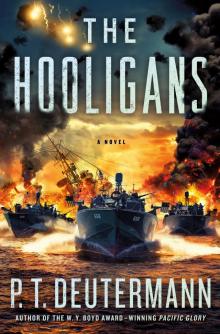 The Hooligans
The Hooligans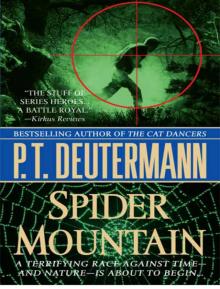 SPIDER MOUNTAIN
SPIDER MOUNTAIN![Cold Frame [retail] Read online](http://i1.bookreadfree.com/i/03/19/cold_frame_retail_preview.jpg) Cold Frame [retail]
Cold Frame [retail] Sweepers
Sweepers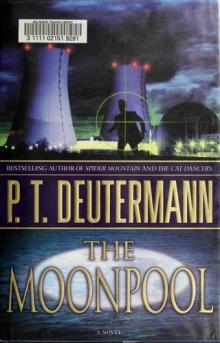 Cam - 03 - The Moonpool
Cam - 03 - The Moonpool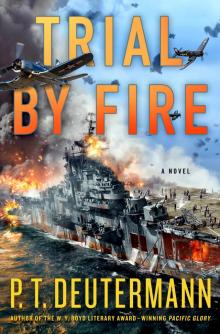 Trial by Fire
Trial by Fire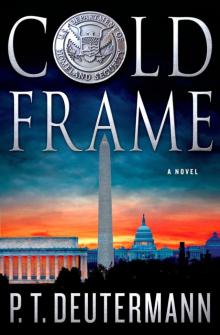 Cold Frame
Cold Frame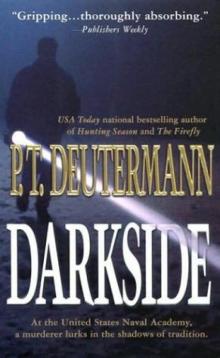 Darkside
Darkside Cam - 04 - Nightwalkers
Cam - 04 - Nightwalkers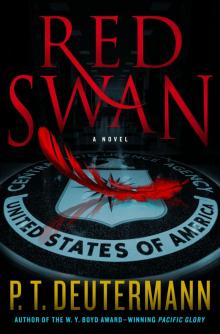 Red Swan
Red Swan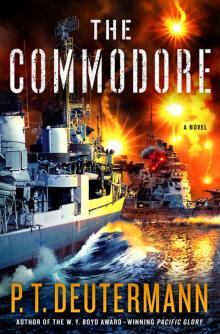 The Commodore
The Commodore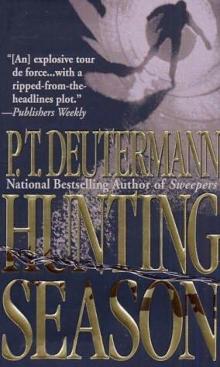 Hunting Season
Hunting Season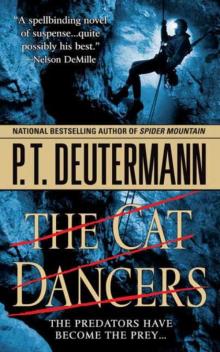 The Cat Dancers
The Cat Dancers Scorpion in the Sea
Scorpion in the Sea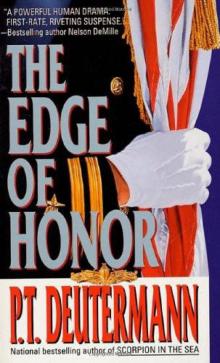 The Edge of Honor
The Edge of Honor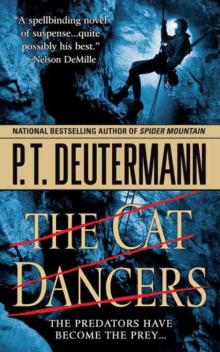 The Cat Dancers cr-1
The Cat Dancers cr-1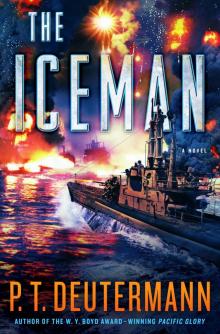 The Iceman
The Iceman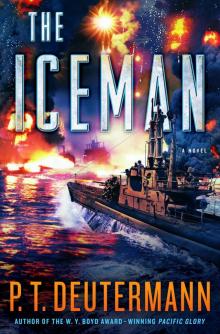 The Iceman_A Novel
The Iceman_A Novel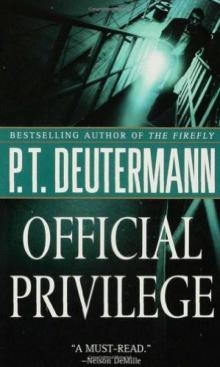 Official Privilege
Official Privilege Sentinels of Fire
Sentinels of Fire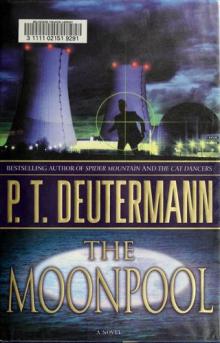 The Moonpool cr-3
The Moonpool cr-3 Nightwalkers cr-4
Nightwalkers cr-4 The Firefly
The Firefly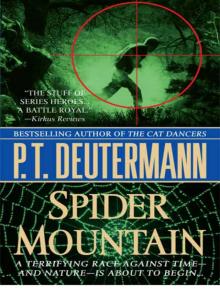 Spider mountain cr-2
Spider mountain cr-2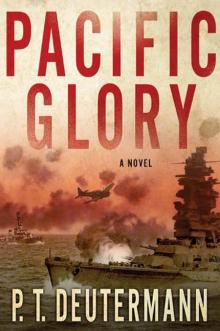 Pacific Glory
Pacific Glory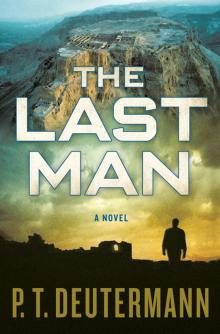 The Last Man
The Last Man